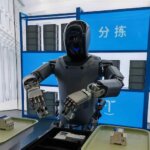Introduction: The Secret Pipeline of Electronics into North Korea
Across the Chinese border towns of Jilin and Liaoning provinces, a quiet revolution is underway. Small electronics factories, often hidden in plain sight, are churning out portable media players, rechargeable TVs, and other gadgets designed specifically for North Korean consumers. These devices are not just changing how North Koreans access entertainment—they are also opening a new front in the battle for influence over one of the world’s most isolated societies.
- Introduction: The Secret Pipeline of Electronics into North Korea
- Inside the Chinese Factories Supplying North Korea
- Smuggling Routes and Evasion Tactics: How the Devices Get In
- From Black Market to Boardroom: The Spectrum of Electronics Trade
- The Black Market: Foreign Tech Thrives Despite Sanctions
- The Digital Divide: How Imported Electronics Are Changing North Korean Society
- In Summary
This underground trade, driven by a complex web of smuggling, business deals, and tacit government approval, is reshaping North Korea’s cultural consumption and potentially softening the ground for broader Chinese influence. But how does this shadowy supply chain work, and what does it mean for North Korea’s future?
Inside the Chinese Factories Supplying North Korea
The electronics factories fueling North Korea’s underground market are typically small-scale operations, with about 20 assembly lines and 15 to 30 workers each. While their official paperwork might claim they manufacture innocuous items like phone parts or portable chargers, their real business is serving North Korean demand. These factories rely heavily on manual labor and basic automation, keeping costs low and production nimble.
Designing for the North Korean market means adapting to unique constraints. Chronic electricity shortages in North Korea mean that every device must be rechargeable. Smugglers often place highly specific orders: devices that cannot record (to avoid surveillance), e-readers limited to text files, or products in certain colors that blend in with local tastes. In a bid to evade detection by North Korean authorities, factories now strip away all brand names from their products—a shift from earlier years when devices carried logos.
The business model is equally distinctive. Trading companies or private investors, sometimes backed by Chinese regional governments, provide advance payments to keep production running smoothly. Local authorities do not directly manage these operations but work through commissioned trading firms and businesspeople, ensuring steady profits for factory operators and a boost to the local economy.
What’s on the Devices? Shifting Content and Cultural Influence
In the past, manufacturers would preload sensitive content—South Korean dramas, K-pop, and foreign news—directly onto devices. But as North Korean crackdowns intensified, this practice became too risky. Now, most South Korean content is distributed separately on USB drives and SD cards, while the devices themselves come packed with Chinese entertainment: TV dramas, variety shows, pop music, and martial arts films.
For many North Koreans, these Chinese videos offer not just entertainment but a window into a different way of life. The high production quality and educational value of Chinese content have sparked growing interest in Chinese family dynamics, urban lifestyles, and even language. As one source in China explained, “People in North Korea are increasingly drawn to Chinese videos because of their high production quality and educational value.”
This cultural influence is not accidental. Some Chinese local governments see strategic value in exposing North Koreans to Chinese content, quietly encouraging the trade as a way to introduce what they consider more “civilized” standards and norms.
Smuggling Routes and Evasion Tactics: How the Devices Get In
Getting electronics into North Korea is a cat-and-mouse game with authorities on both sides of the border. The main overland routes have shifted in response to changing enforcement patterns. While the Dandong-Sinuiju corridor was once the primary channel, stricter inspections and higher customs charges have pushed much of the trade to Hunchun and Changbai in Jilin province, where customs checks are more relaxed.
According to reports, up to 300 trucks a day, each carrying over 10 tons of cargo, cross from Hunchun’s Quanhe customs house into North Korea. These shipments include not just electronics but also appliances, car parts, and even luxury goods. Trucks affiliated with North Korean consulates enjoy special privileges, often bypassing rigorous inspections altogether.
Chinese customs authorities are well aware of these flows but often choose to look the other way, especially when local economies benefit. Occasionally, authorities conduct tax audits or health inspections, but they rarely address the operations’ clear connections to North Korea or their violation of international sanctions. As one observer put it, “Local governments see no downside to these factories; they boost the local economy and provide livelihoods for small business owners.”
North Korea’s Crackdown: A Losing Battle?
North Korea has responded with an intensive campaign against Chinese-made electronics, launching sweeping mop-up operations in border areas and deploying state security forces to hunt down illegal device users. Surveillance tactics include signal detectors, undercover operations, and interrogations. Remittance brokers and others who rely on Chinese-made mobile phones live in constant fear, keeping calls brief and devices powered off whenever possible.
Yet, even the families of state security officers and inspectors are among the most avid users of these devices. The sheer volume of smuggled electronics, combined with the ingenuity of smugglers and factory operators, makes it nearly impossible for authorities to stem the tide. As one North Korean resident reportedly said, “The authorities are fighting a losing battle. The devices keep flowing in through invisible channels from China.”
From Black Market to Boardroom: The Spectrum of Electronics Trade
While much of the electronics trade operates underground, there is also a semi-official side. North Korean companies like the Mangyongdae Trading Company have struck formal deals with Chinese high-tech firms to acquire critical electronic parts, including semiconductors, lithium-ion batteries, and display panels. In exchange, North Korea provides rare earth minerals—essential for high-tech industries like electric vehicles and smartphones.
These deals are notable not just for their scale but for their sophistication. The two sides have agreed to joint development of mines, improved logistics, and even the use of digitally encrypted payment systems—likely designed to evade international sanctions. This cooperation is part of a broader Chinese strategy to integrate North Korea into Northeast Asian industrial and supply chain networks, giving China greater influence over its neighbor’s technological future.
North Korean Importers: Navigating the Risks and Rewards
North Korean trading companies, such as Puksae Electronic Trading Company, maintain delegations in China to source parts and devices. These delegations are under constant pressure to deliver results, with annual business reviews determining personnel assignments and future trade plans. The goal is not just to meet domestic demand but also to develop new products that can be sold for foreign currency, helping the regime bring privately held assets under state control.
Despite high prices, North Koreans remain keenly interested in new releases of media players and other gadgets. The government urges trading companies to expand imports of Chinese-made parts, reflecting both consumer demand and the regime’s need for hard currency.
The Black Market: Foreign Tech Thrives Despite Sanctions
International sanctions prohibit the export of electronics with military applications to North Korea, but the black market remains vibrant. Foreign-made mobile phones, laptops, smartwatches, and even high-end computer components are openly advertised and sold inside the country. North Korean electronic payment apps list products from global brands like Lenovo, Dell, Asus, and Huawei, though the import routes are often opaque.
Package deals targeting students and the elite offer smartphones, laptops, and luxury goods at prices that would be staggering for ordinary citizens. The most expensive packages can cost nearly $2,000—a fortune in North Korea. These goods are typically destined for the country’s highest officials or the newly wealthy merchant class known as donju.
To avoid detection, trading officials sometimes ask Chinese intermediaries to remove brand names or instruction labels from South Korean products, or even relabel them as made in China. This elaborate game of disguise highlights both the demand for foreign technology and the lengths to which North Korean elites will go to obtain it.
Financial Flows: Cryptocurrency and Laundering Tactics
Funding and profiting from the underground electronics trade requires creative financial maneuvers. North Korean trade officials in China have increasingly turned to Bitcoin and other cryptocurrencies to shield assets from regime scrutiny. By using VPN-equipped phones and intermediaries, they can invest in Bitcoin and move funds beyond the reach of North Korean authorities.
China’s financial system also plays a central role. Transactions in yuan are often unmonitored, and underground banks or shadow finance networks use fake Chinese names and cash transactions to move money. The loss of the UN Panel of Experts in 2024, due to a Russian veto, has made monitoring these activities even more difficult, though new multilateral efforts are underway.
The Digital Divide: How Imported Electronics Are Changing North Korean Society
The influx of foreign electronics is not just a story of smuggling and sanctions evasion—it is also transforming daily life in North Korea. In urban areas like Pyongyang, Nampo, and Sinuiju, electronic payment systems using mobile apps, barcodes, and QR codes are becoming increasingly common. Some stores now display signs reading, “You only need your mobile phone, no cash required.”
However, a sharp urban-rural divide remains. In remote provinces, cash transactions still dominate, and technical barriers—such as lack of electricity and equipment—slow the adoption of electronic payments. The use of foreign currency, particularly Chinese yuan, has increased in border regions, reflecting the impact of resumed trade with China.
For young North Koreans, especially those in cities, access to Chinese-made media players and smartphones is rapidly becoming a normal part of life. These devices provide not just entertainment but also a glimpse of the outside world, fueling aspirations and, perhaps, quiet discontent with the status quo.
China’s Long Game: Influence Through Technology and Culture
China’s role in North Korea’s electronics market goes beyond economic self-interest. By supplying devices loaded with Chinese content, supporting educational exchanges, and integrating North Korea into regional supply chains, China is pursuing a deliberate strategy of influence. At Pyongyang University of Science and Technology, Chinese professors help shape the curriculum, and online education platforms focus on fields like smart agriculture and medicine—areas where China excels.
Unofficial economic support, such as overlooking smuggling and allowing North Korean workers to remain in China, further strengthens the relationship. For China, a stable North Korean regime serves as a strategic asset—a buffer state and a potential partner in regional development.
In Summary
- Small Chinese factories in border regions are quietly manufacturing electronics tailored for North Korean consumers, fueling a thriving underground market.
- Devices are designed to evade North Korean surveillance and meet local needs, with content shifting from South Korean media to Chinese entertainment.
- Smuggling routes have adapted to stricter enforcement, with much of the trade now flowing through Jilin province, where customs checks are more relaxed.
- North Korea’s crackdowns have struggled to keep pace, as demand for foreign electronics remains high among both ordinary citizens and elites.
- Formal business deals between North Korean and Chinese firms are helping to modernize North Korea’s tech sector, while cryptocurrency and shadow finance networks facilitate illicit trade.
- The influx of electronics is widening the digital divide within North Korea but also exposing more citizens to foreign culture and technology.
- China’s strategy appears aimed at gradually integrating North Korea into its sphere of influence through technology, media, and education.












